Atomska banja
Diagnostics is the process that leads to the diagnosis of the disease. Diagnostics, that means a proper diagnosis, is the basis for a good treatment. In the process of diagnosis, the doctor is guided by symptoms and the signs of disease. The symptoms of the disease are the symptoms that the patient feels or notices himself, while the signs of the disease a physician himself notices on a patient. The process of diagnostics consists of diagnostic methods which include history, inspection, palpation, auscultation and other diagnostic methods.
Diagnostics is the process that leads to the diagnosis of the disease. Diagnostics, that means a proper diagnosis, is the basis for a good treatment. In the process of diagnosis, the doctor is guided by symptoms and the signs of disease. The symptoms of the disease are the symptoms that the patient feels or notices himself, while the signs of the disease a physician himself notices on a patient. The process of diagnostics consists of diagnostic methods which include history, inspection, palpation, auscultation and other diagnostic methods.
On the one hand, for the diagnostics of diseases, sometimes it is enough just a basic physical examination which the doctor performs in his office with the possible use of a basic medical equipment, such as a stethoscope. On the other hand, certain diagnostic methods require not only more complex equipment but also carrying out under strictly controlled conditions.
Laboratory diagnostic
The results of laboratory tests help the doctor in assessing the state of a patient’s health.
Laboratory analyses are used by doctors in their daily work, and they are important for:
During diagnosis, the obtained values are compared with reference values, while for monitoring of a disease progression as well as the effects of therapy, the patient’s findings are compared with his earlier findings.
If the patient does not have health ailments, it is recommended to check from preventative reasons a blood count (CBC), urine check-up and basic biochemical parameters (glucose, cholesterol, triglycerides, urea, creatinine, uric acid, bilirubin, AST, ALT, ALP, iron etc.) every six months or at least once a year. Those analyses will help the physician to monitor the patient’s condition.
Ultrasound diagnostic
Thanks to the simplicity and safety of examination, ultrasound represents a reliable and efficient method in the detection and monitoring of various diseases of organs such as:
abdominal cavity organs, bone and joint system, thyroid, breast and others. Technical review is based on high-frequency sound waves that pass through the tissues and organs, they are deducted at different speeds, they are returning to the probe and visualized on the screen.
Abdominal ultrasound is a diagnostic method that aims to show the structure of various organs in the abdominal cavity and the same diseases: congenital abnormalities, inflammatory changes – acute and chronic, cysts, benign and malignant tumours, liver cirrhosis, nephrolithiasis (kidney stones), gall bladder and kidney, the presence of free fluid in the abdominal cavity, an aneurysm (enlargement) and atherosclerotic plaques (layers) on major blood vessels, injuries.
Ultrasound bone and joint system is a highly sophisticated, harmless and very precise diagnostic method that can visualize changes in articular structures (cartilage, synovium, joint capsule), annex and structure of sinews and ligaments, muscles and others. It has an exceptional significance in diagnosing inflammatory and degenerative joint diseases, muscle injuries and diseases, injuries and inflammation of ligaments, sinews.
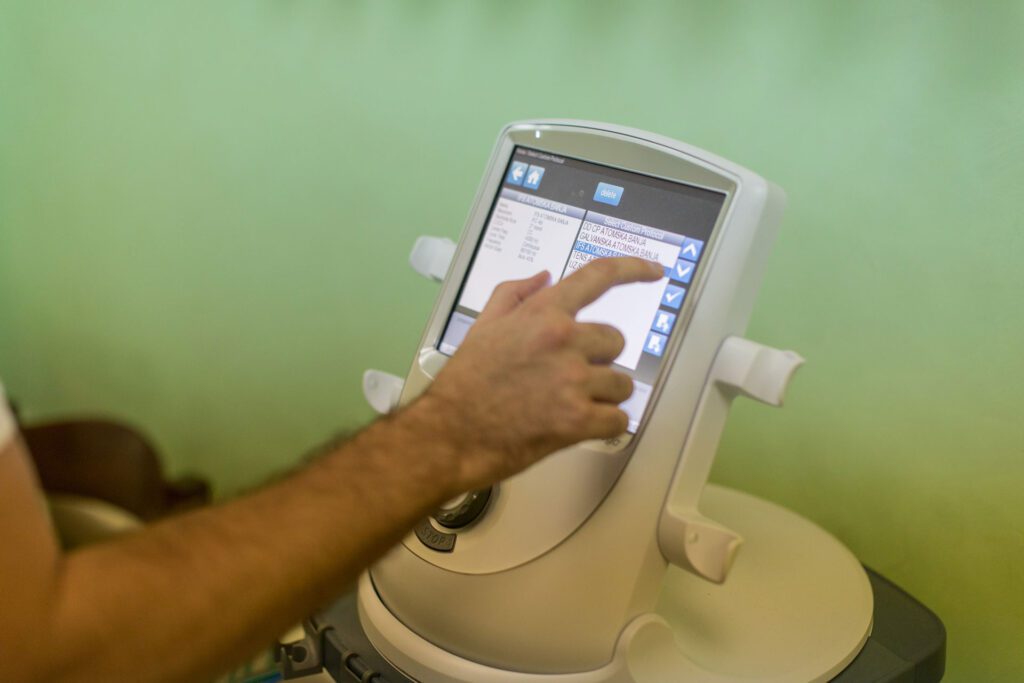

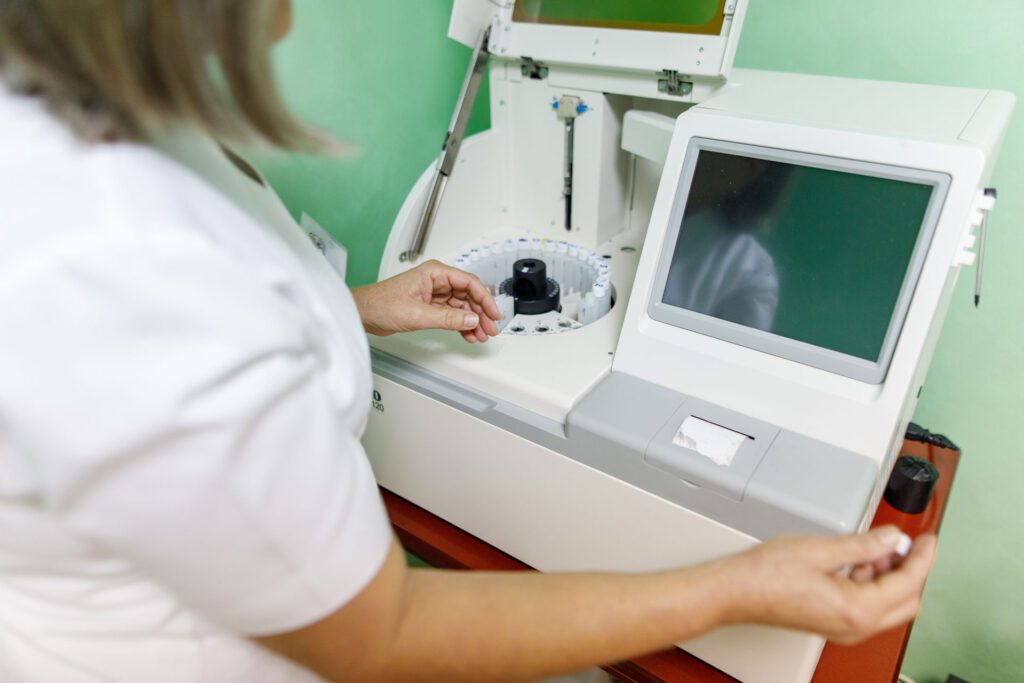
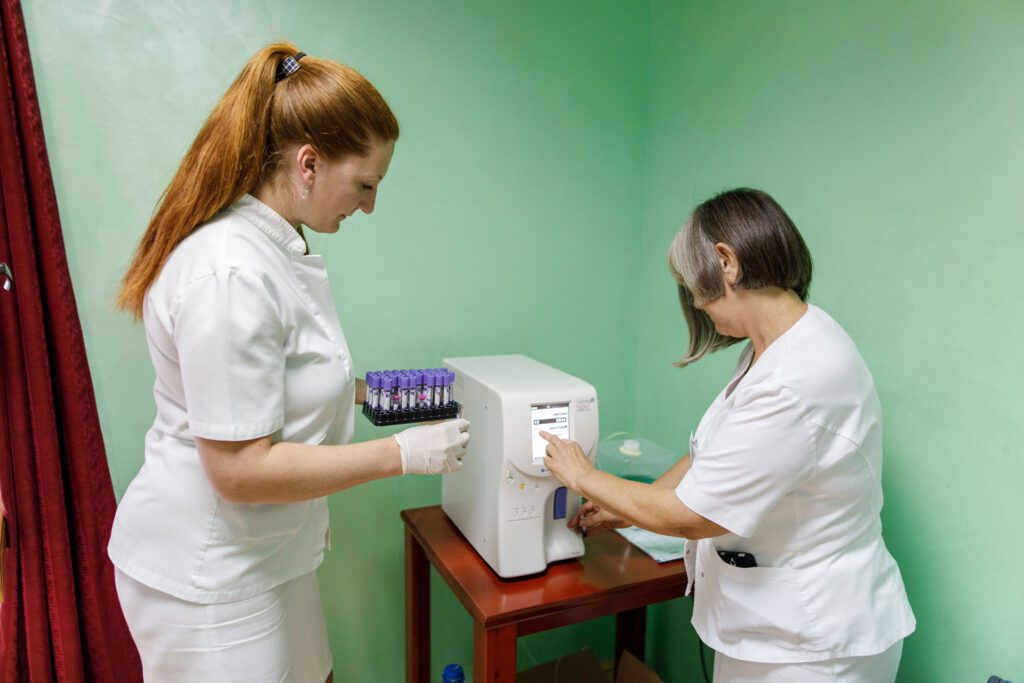
Mineral water which has been tested on the territory of Gornja Trepca, can be used for a medical rehabilitation of patients with neurological diseases, and it has proven in particular to be effective in multiple sclerosis, rheumatic diseases (inflammatory and degenerative), as well as diseases of the gastrointestinal tract and peripheral blood vessels. A series of factors that act mutually (mineral water, temperate climate, clean mountain air, a favourable magnetic field, a favourable regime of diet, sleep, rest and leisure), and enrich reciprocally in the Clinic Atomska banja, enable the strengthening and recovery of the organism exhausted by a long-term illness and the rehabilitation of certain categories of patients in order to prepare them for more active and independent life.
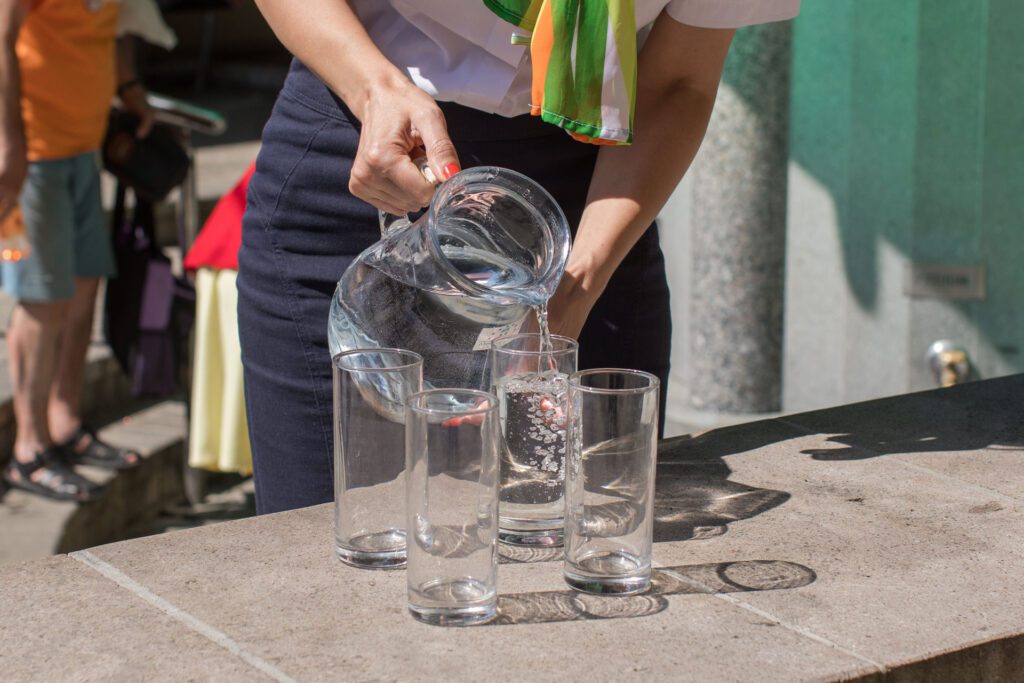
I RHEUMATIC DISEASES
1. Chronic inflammatory rheumatism
• Rheumatoid arthritis
• Spondyloarthropathies
2. Degenerative rheumatism
• Arthrosis
• Spondylosis, Discopathy
3. Extrarticular rheumatism
• Myositis
• Fibrositis
• Panniculitis
4. Metabolic joint disorders
• Gout
II NERVOUS SYSTEM DISEASES
1. A central nervous system
• Multiple sclerosis
• Conditions after the transverse myelitis and encephalomyelitis
• The adhesive spinal arachnoiditis
• Posttraumatic myelopathies
• Cerebrovascular insufficiency
• Cerebral palsy
• Parkinson’s Disease
2. A peripheral nervous system
• Mononeuritis and polyneuritis
• Traumatic nerve injuries
• Polyneuropathies
III DIGESTIVE DISEASES
• Ulcus Ventriculi and Ulcus Duodenal
• Chronic gastritis and chronic enteritis
• Irritable bowel syndrome
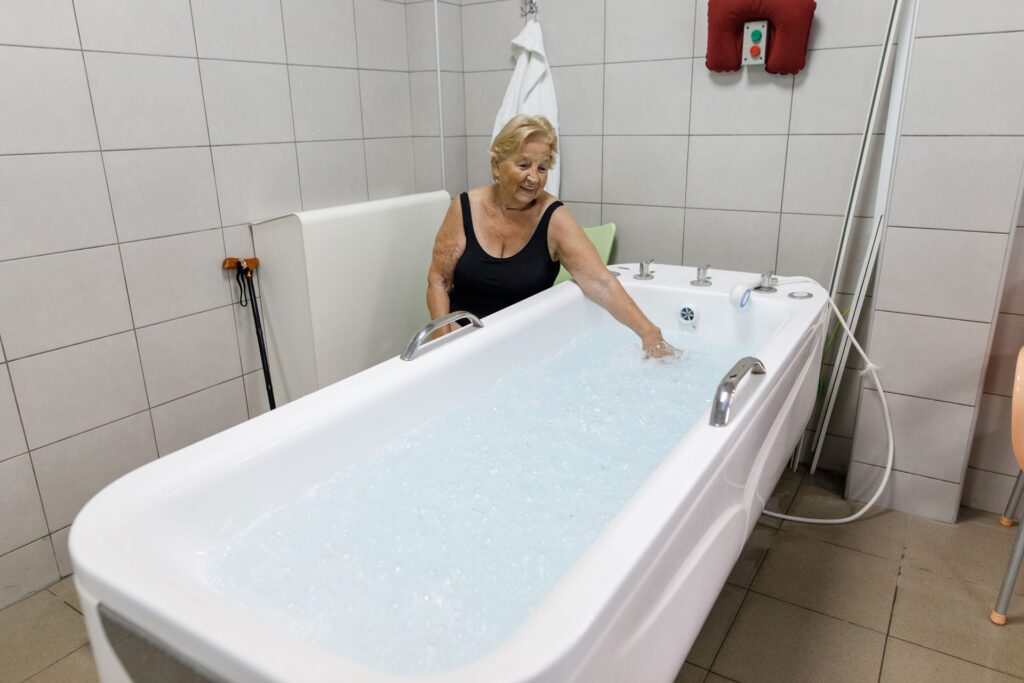
Physical therapy
Hydrotherapy
Kinesitherapy
Horizontal therapy
Ultrasound therapy
Magnet therapy
Laser therapy
Electrotherapy
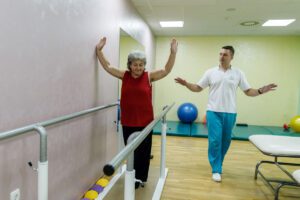
Physical therapy is the application of various forms of physical energy (light, heat, electrical, magnetic, mechanical…) for the purpose of prevention, treatment and functional training of patients and injured (medical rehabilitation).
The term physical therapy is derived from the Greek word ’fysis’, which means ’natural’, that means the use of natural factors for the purposes of treatment. Even the ancient Assyrians, Egyptians, Greeks and Romans used solar light energy for the purposes of treatment. The ancient Chinese used natural agents for the purposes of treatment, especially heat, movement, sting …
Therefore, we can say that physical therapy is one of the oldest methods of treatment in the history of medicine.
In physical therapy we use different physical procedures that have their own purpose and effects. The most commonly used electro analgesic procedures in order to reduce pain and muscle electro stimulation in order to strengthen the weakened muscles.
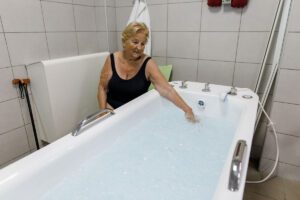
Ever since Roman times healing properties of water in this region were known to people as evidenced spa near Čačak dating back to the III century BC. Healing waters of Gornja Trepca are made up of unique in the world. In addition to chemical effects as a result of the mineral composition, the water of the spa and have physical properties that are used for therapeutic purposes. The nervous processes activate, the cardiovascular and respiratory systems stimulate , blood circulation and metabolism improve, and in rheumatic diseases reduce pain and stiffness. Hydrostatic pressure on the venous vessels leads to their better emptying and relieving varicose veins. Radioactive elements contained in it have a beneficial effect on the recovery of nerve and muscle tissue. Also, they contain the rare micro and macro elements, which are known for their active biological effects on the human body.
Hydrotherapy is one of the basic and most effective therapies that are implemented in this sanatorium and performed in tubs and pools with adequate hydro massage.
Underwater massage is a type of hydro-therapy that is carried out in water, using special apparatus under a certain pressure ejected stream of water directed at the body part to be massaged.
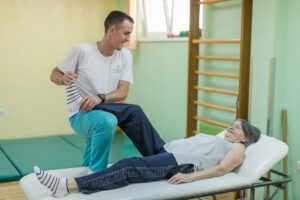
Kinesitherapy, as one of methods of medical rehabilitation, is essentially a non-specific functional form of treatment using the movement or the movement, as an essential instrument in the effort, which improves impaired health or bring a complete cure. The beneficial effects of physical training can be local and general. The most common methods of kinesi exercises are carried out in order to active treatment or prevention.
The therapeutic effects of physical training are:

Horizontal therapy involves the use middle frequent currents with a strong analgesic effect and biostimulative. Application time may range from 20 minutes to one hour. It has a wide field of application and physical medicine:
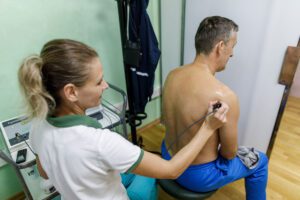
The most important therapeutic effects of ultrasound are:
Indications for US:
Subaquatic ultrasound: use of ultra-sound through the medium of water
Sonophoresis: importation of drugs via ultrasound.

The electromagnetic field acts on the cellular level which gives rise to a number of therapeutic effects on the whole body:
Indications for EMP are:
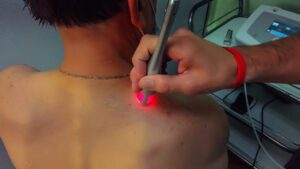
This therapy is the application of light rays primarily for pain relief and reduction of swelling. Therapeutic LASER facts are:
HILT –HIGH POWER LASER DEVICES
High power laser has taken laser therapy to a new, higher level. Higher power achieves higher photon delivery, shorter treatment time, generates greater thermal effect and achieves better healing.
The HPL laser almost immediately blocks pain in soft tissues and joints. The three wavelengths provide optimal tissue absorption and achieve a far greater penetration depth than a low-power laser.
Indications for laser application are numerous:

The application of currents that have a positive impact on the metabolism of all tissues:
Diadynamic currents
The therapeutic effects of these currents are:
– A strong analgesic effect
– Stimulation of blood circulation – dilate blood vessels, reduce swelling and haematoma,
– Reduces spasms (’knots’) and thereby reduces muscle pain,
Indications for application of diadynamic current:
– Arthrosis and arthritis in severe pain phase,
– Cervical and lumbar syndrome,
– Radiculopathy,
– Neuralgia, neuritis,
– Distortion, contusion, subluxation (soft tissue injuries)
Galvanic currents: therapeutic effects of these currents are:
– Improve circulation (primary and reactive hyperemia)
– Reduction of inflammation of the tissues and improvement of the local tissue metabolism,
– Analgesic effect (reduction of pain sensation)
– Introduction of drugs through the skin using galvanic current (electrophoresis) combines the power and the very fact of the drug substance.
Indications for the application of galvanic current:
– Neuralgia, neuritis,
– Peripheral paresis and paralysis
– Periarthritis, bursitis, tendinitis, Enthesopathies
– Arthrosis, arthritis
– Cervical and lumbar syndrome (pain syndromes in the neck and back)
– Swellings and posttraumatic haematoma, distortion, distension (soft tissue injuries)
Interference current, therapeutic effects of these currents are:
– Improving the nutrition and supply of oxygen to tissues
– Reduction of pain – declares that the stronger than in other forms of electrotherapy,
– Improve and accelerate bone healing after fractures – callus formation,
– Stimulation of the recovery of injured nerves.
The therapeutic significance of these currents is the selective stimulation of the muscles in injuries and peripheral nerve damage.
Indications for application of ES:
– Peripheral paresis and paralysis when injury and nerve damage for the prevention and treatment of hypotrophy and atrophy of muscle tissue.
Tens: Transcutaneous electrical neuro-stimulation therapy of pain. Efficient against pain of various origins:
– Acute,
– Chronic,
– Neurogenic.
Ease of implementation and minimal contraindications allows the patient to control pain and reduce the use of drugs – analgesics, without any side effects.


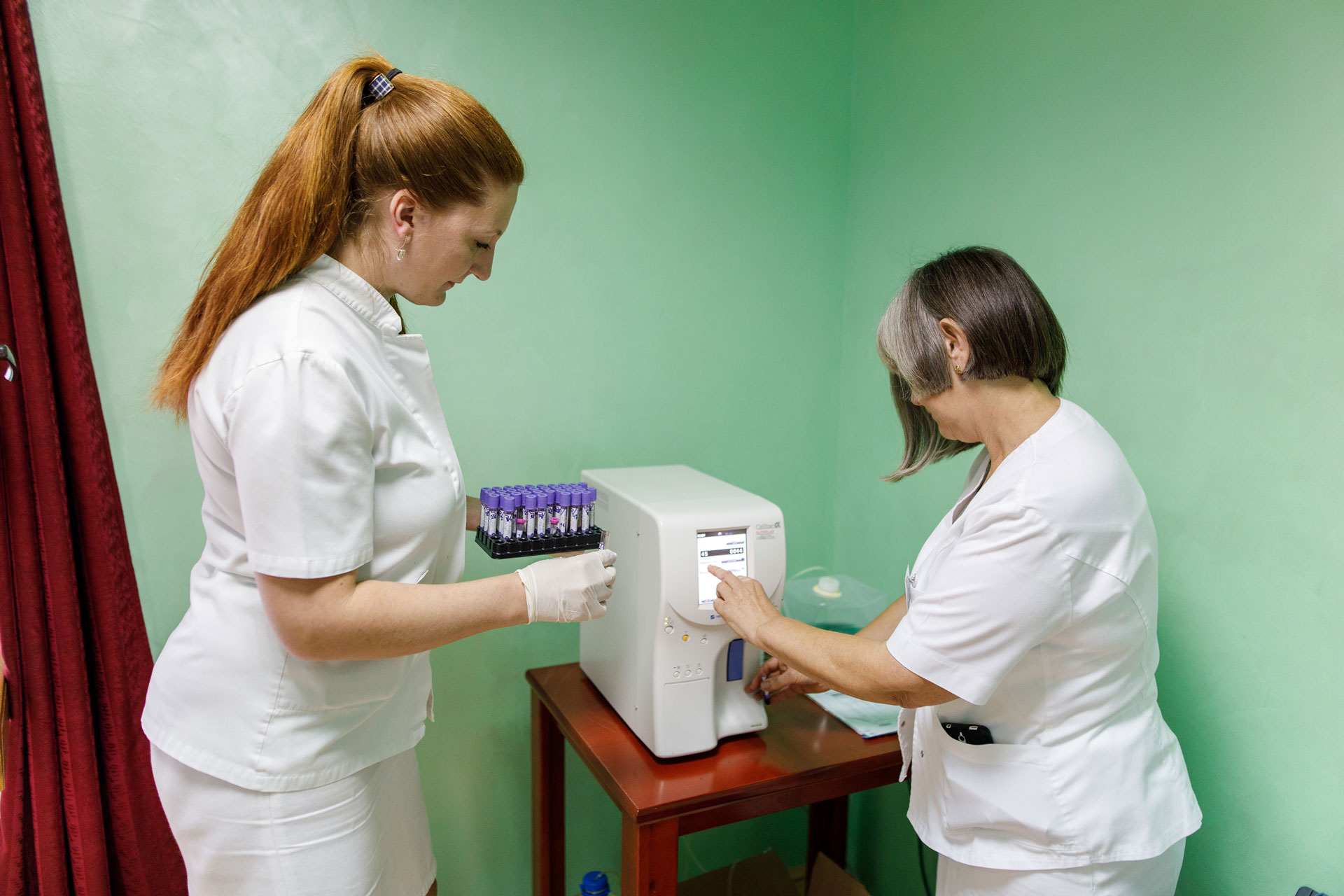
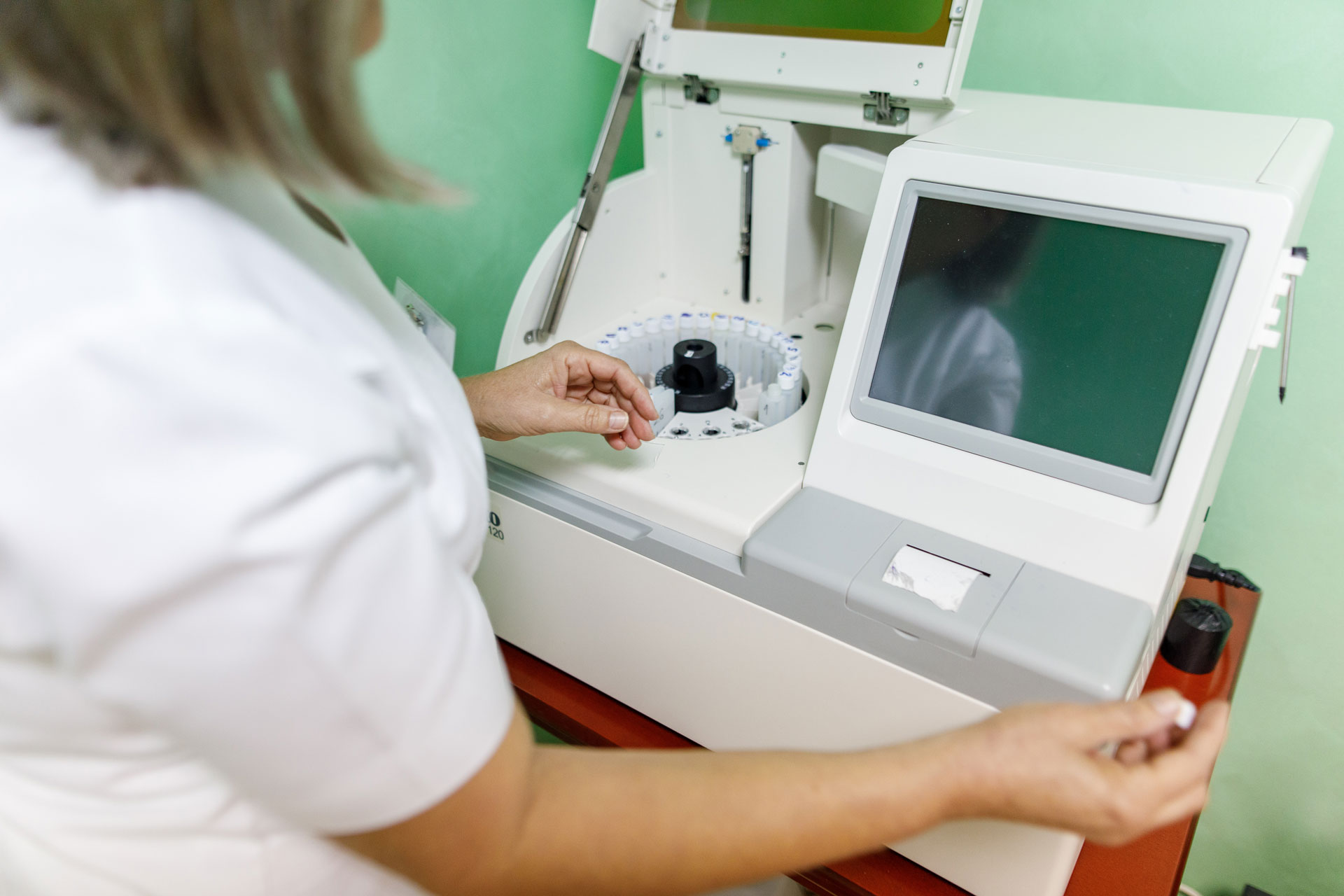
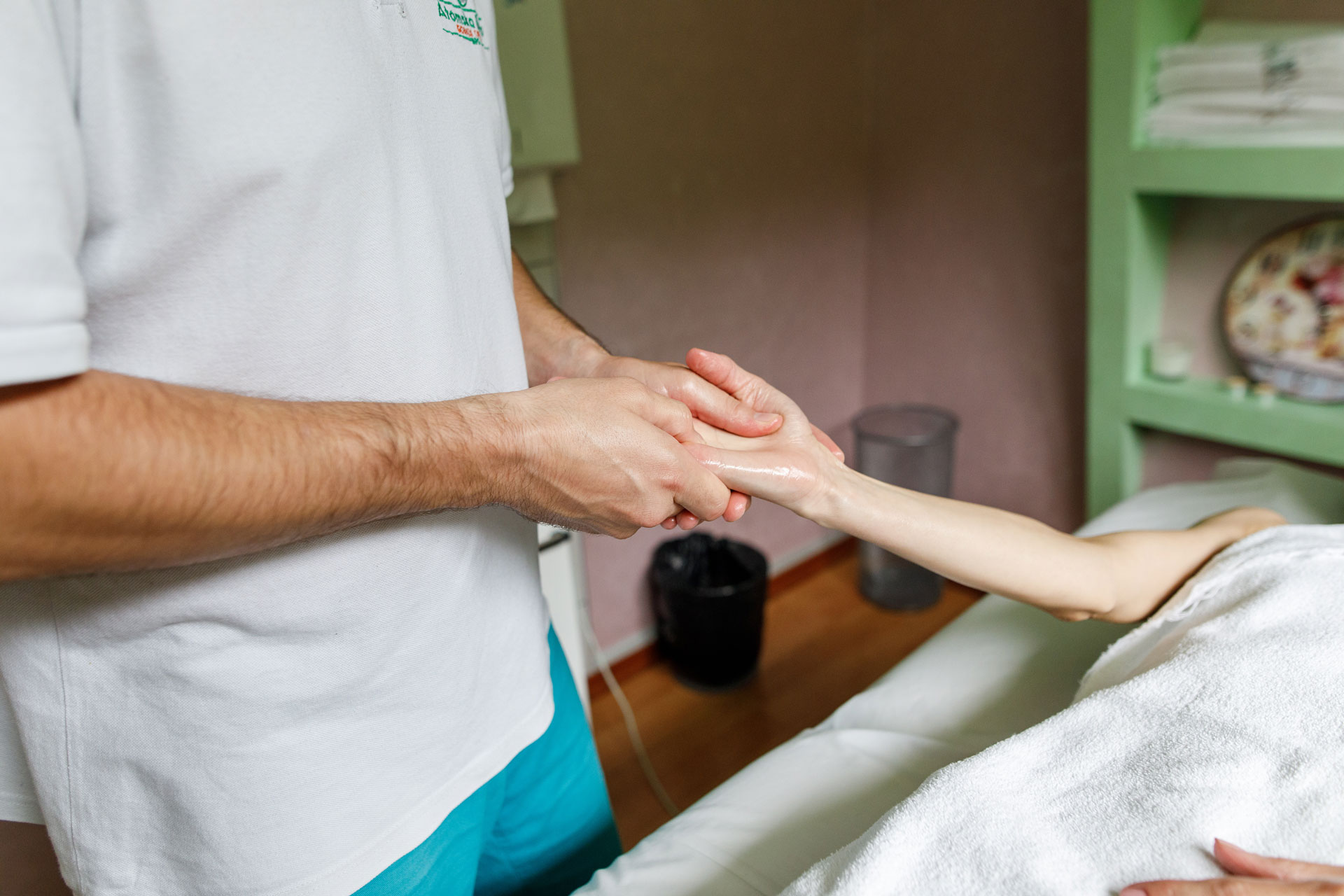



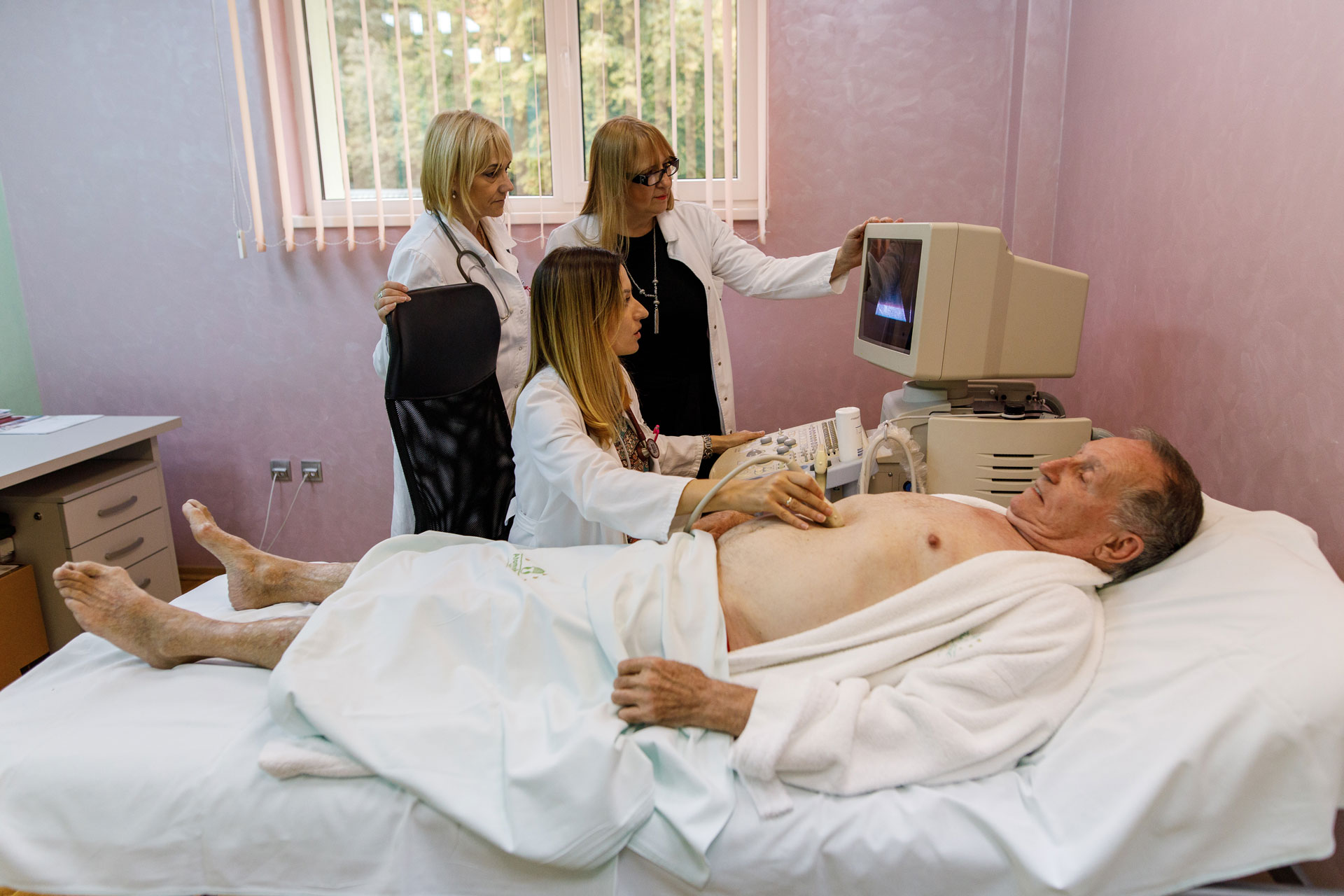
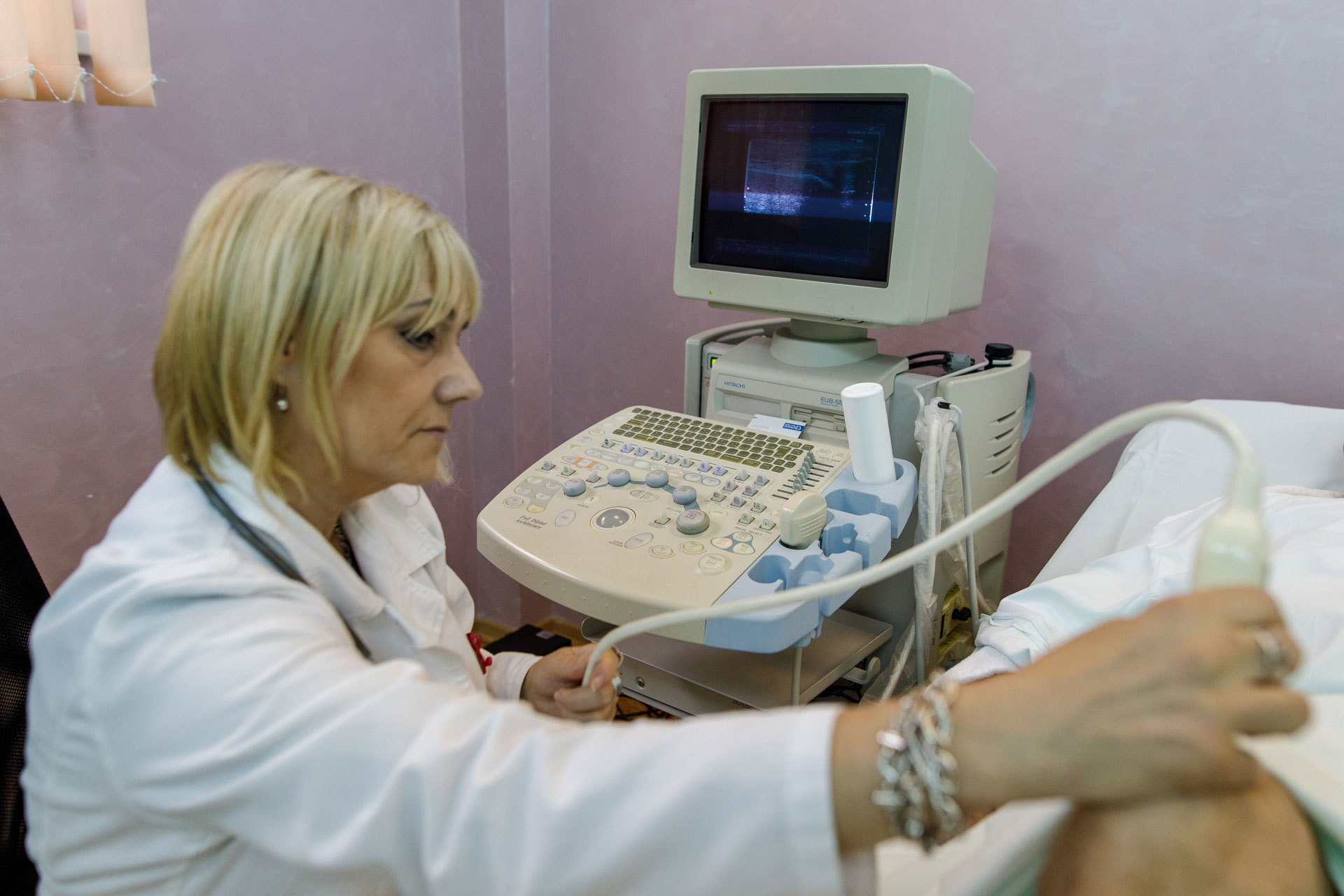
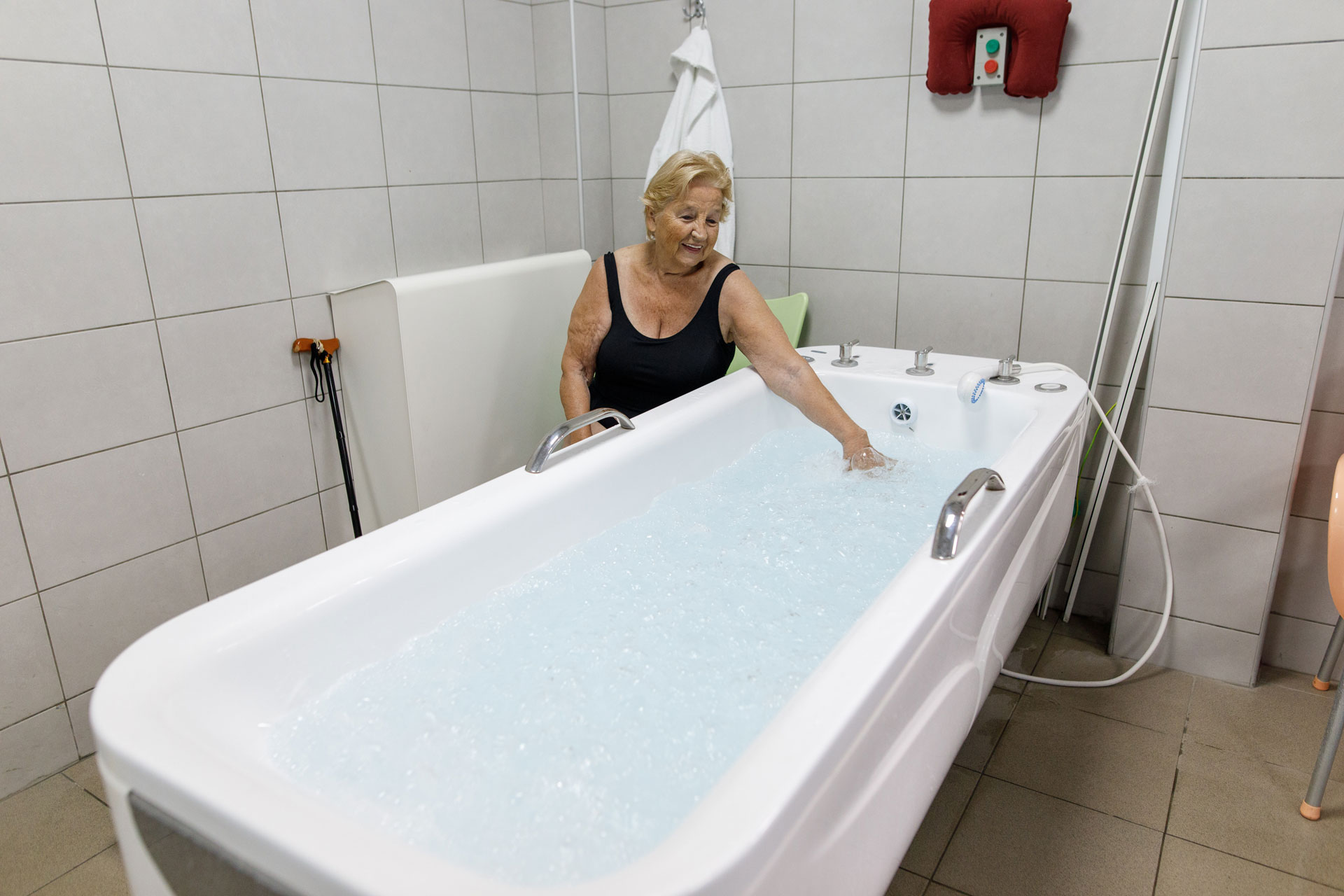
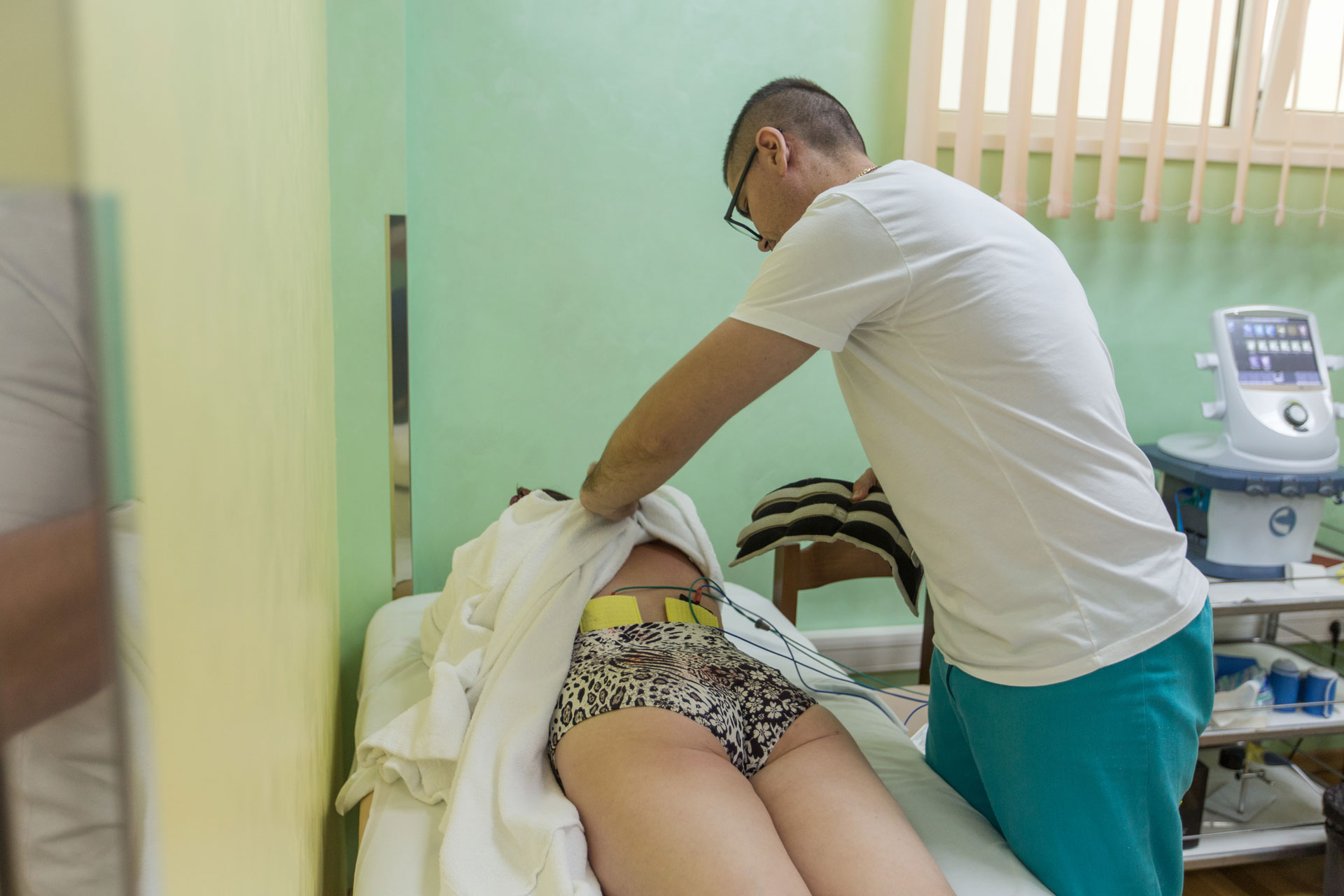
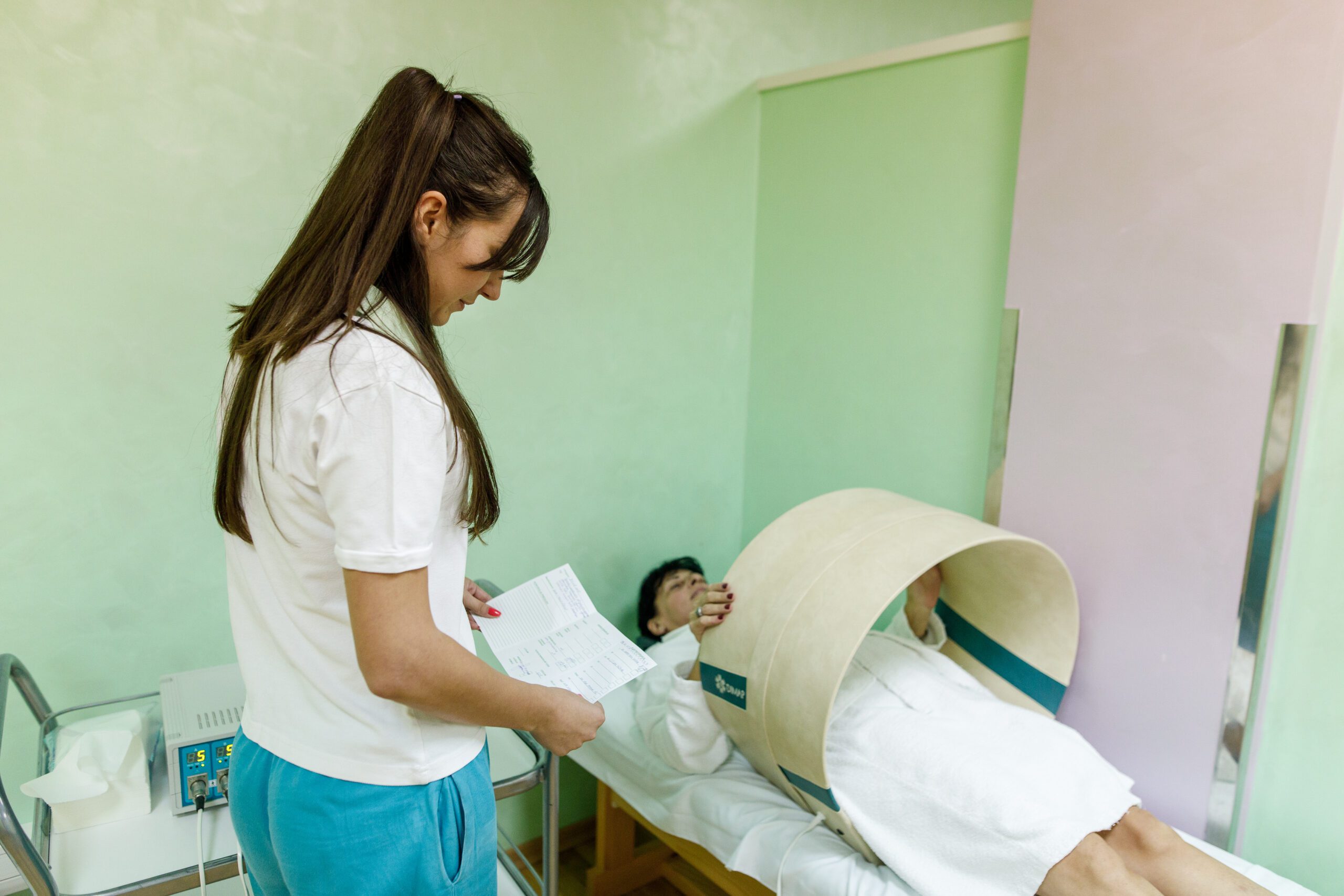
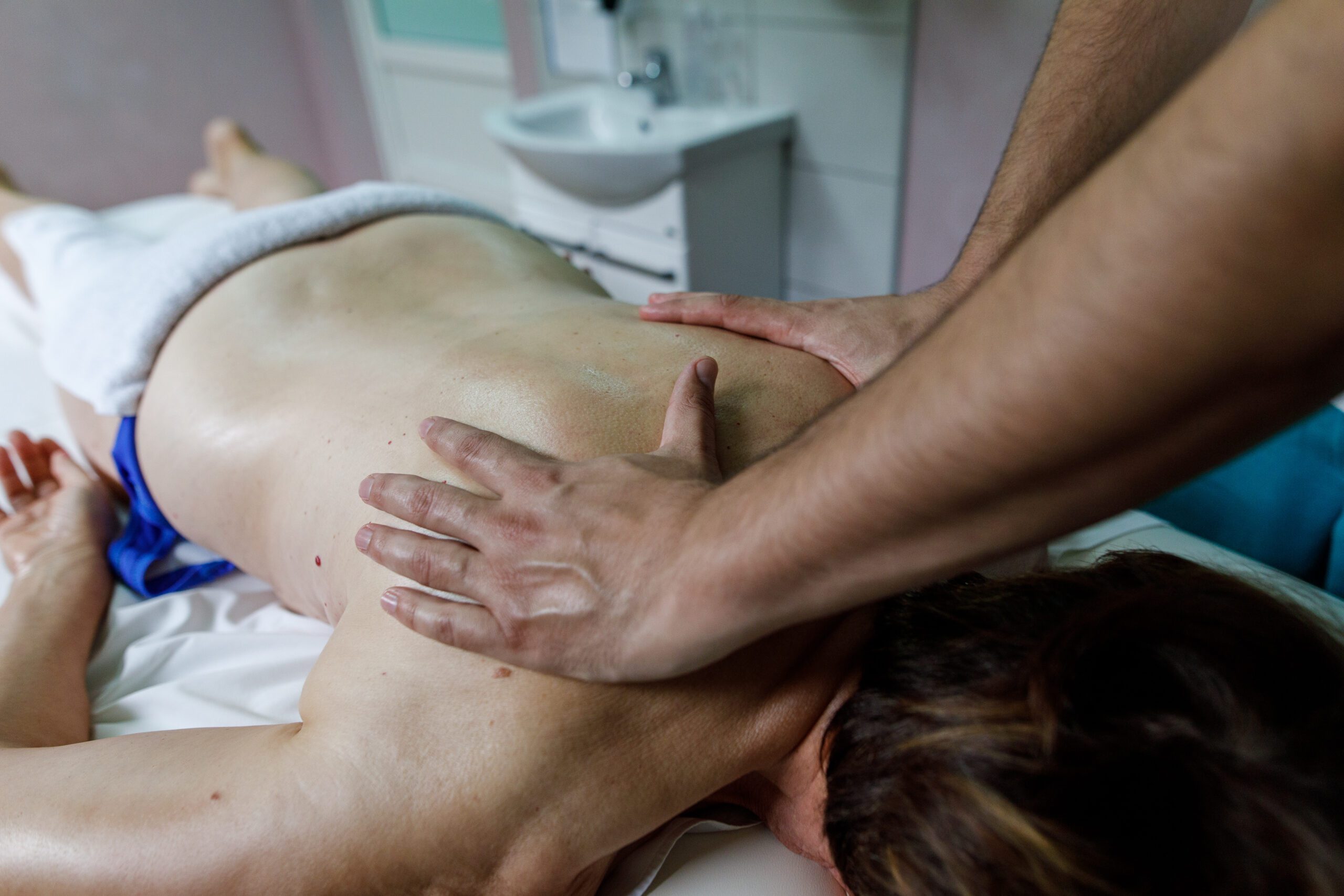

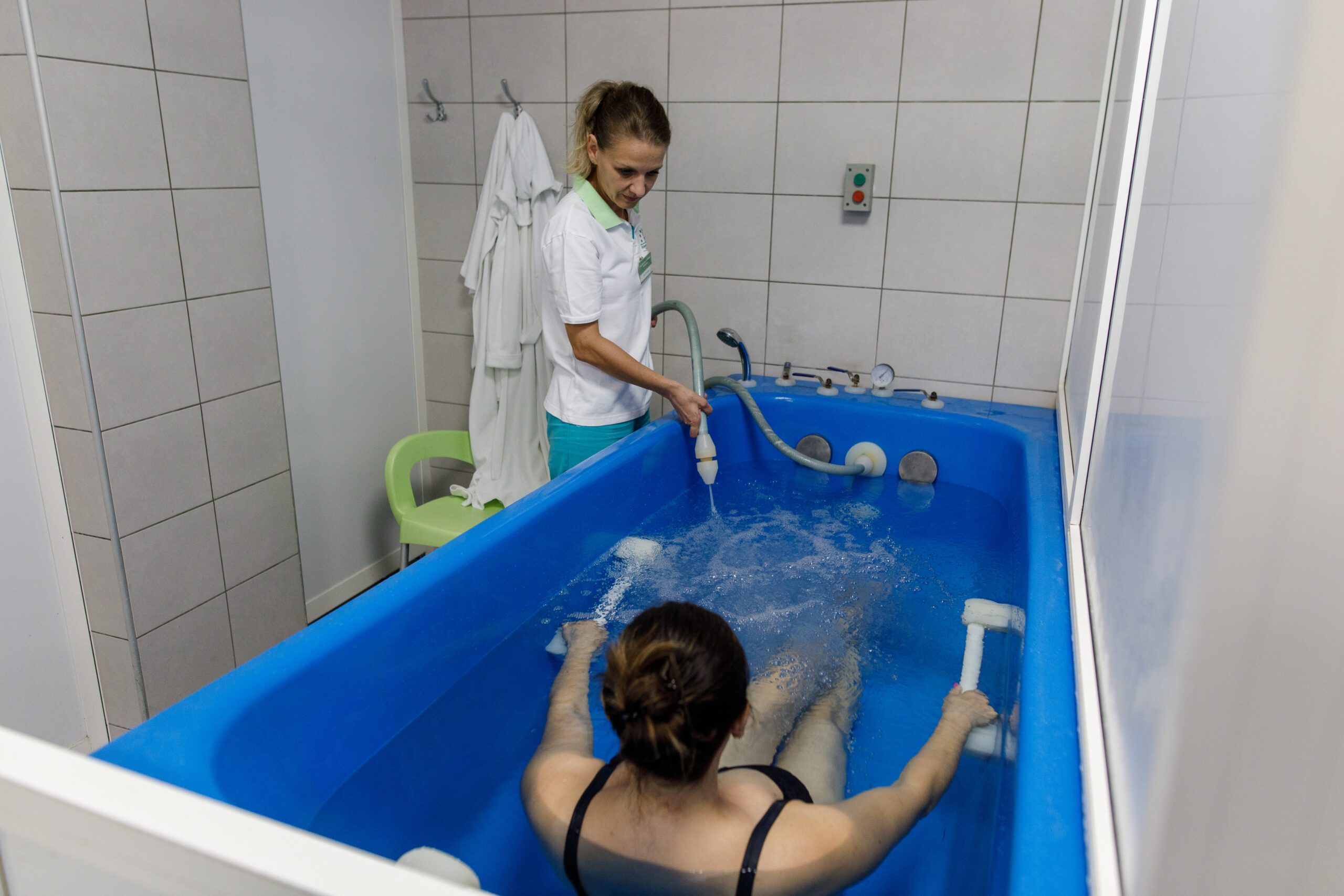

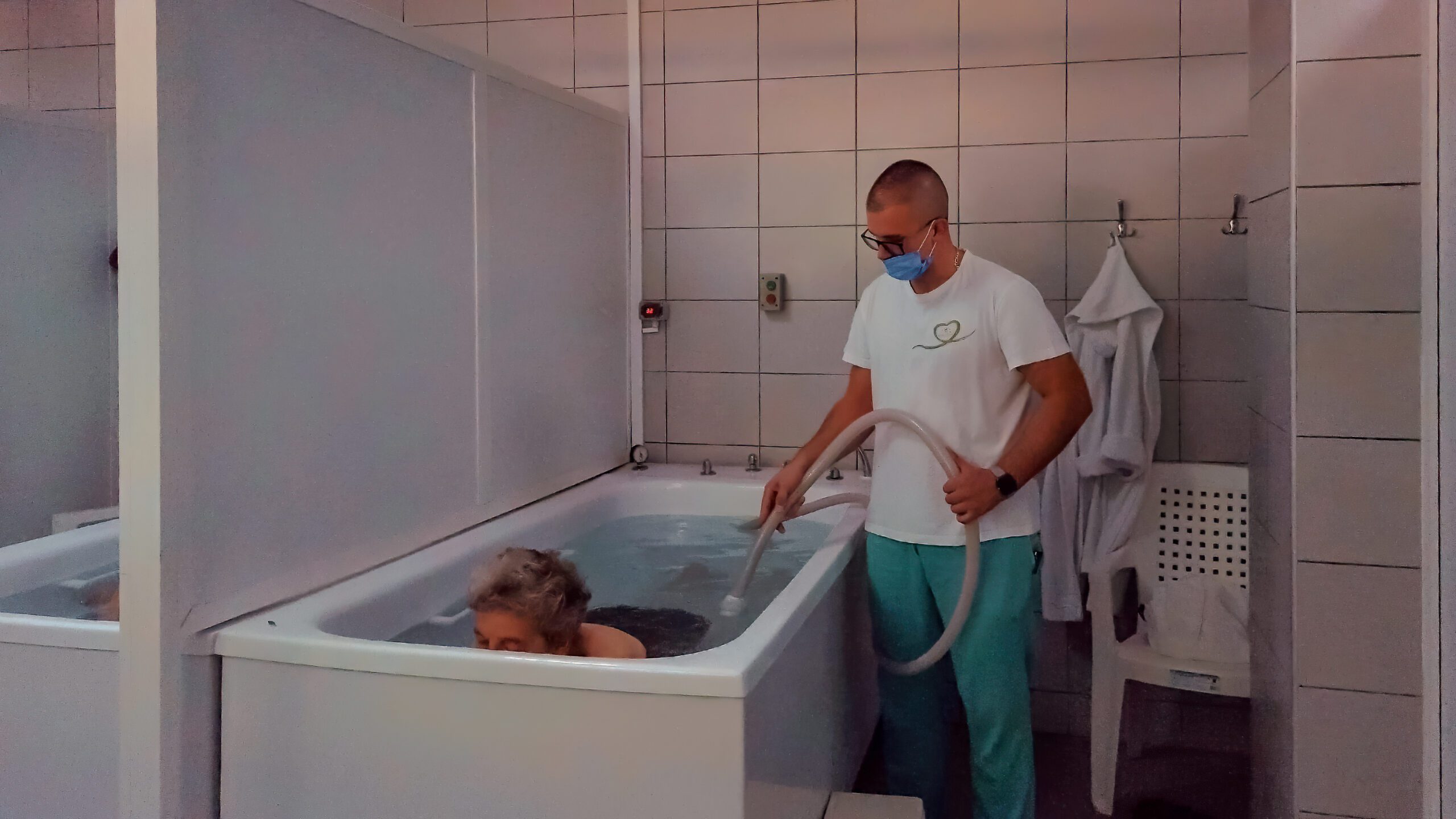
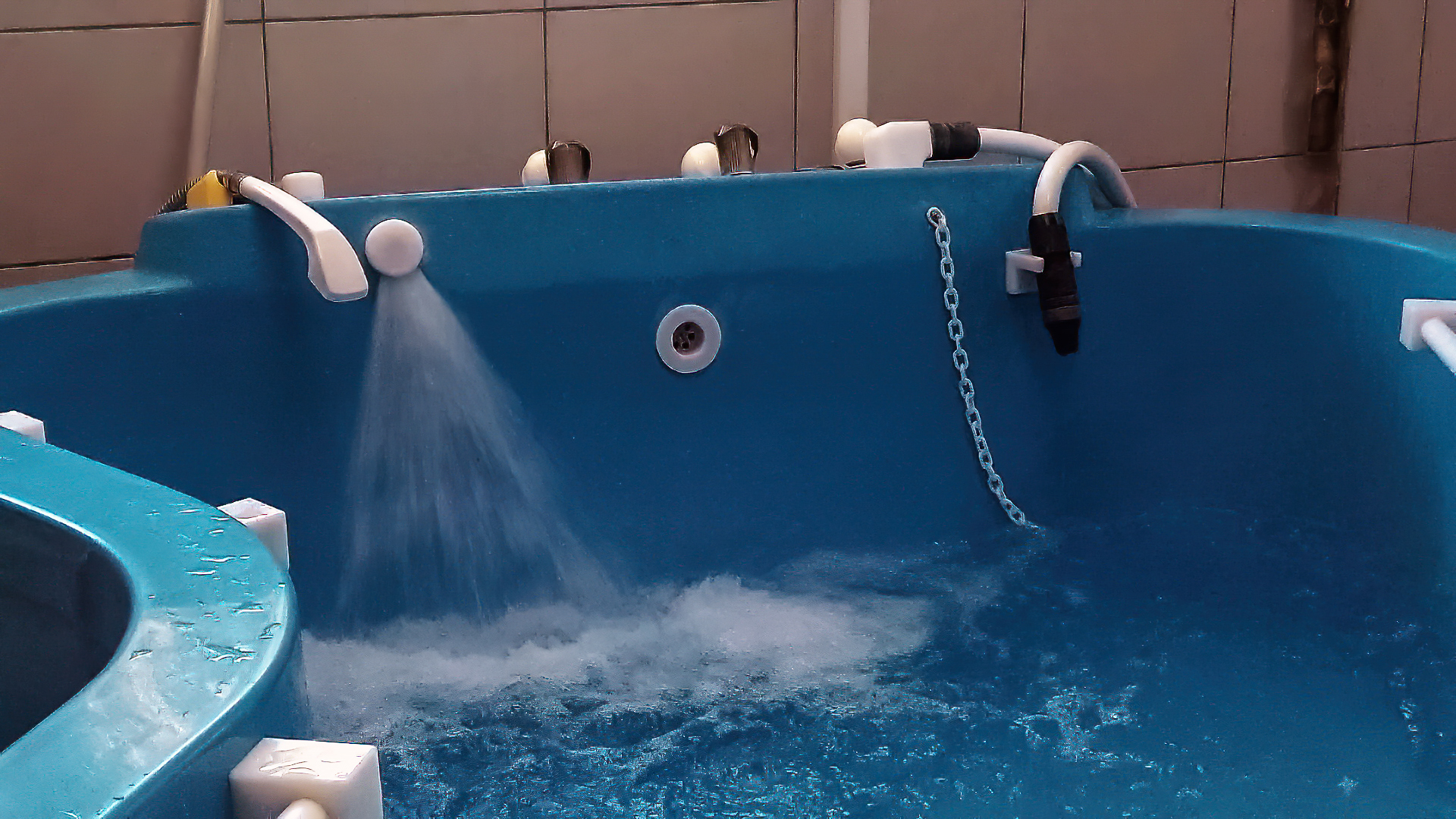
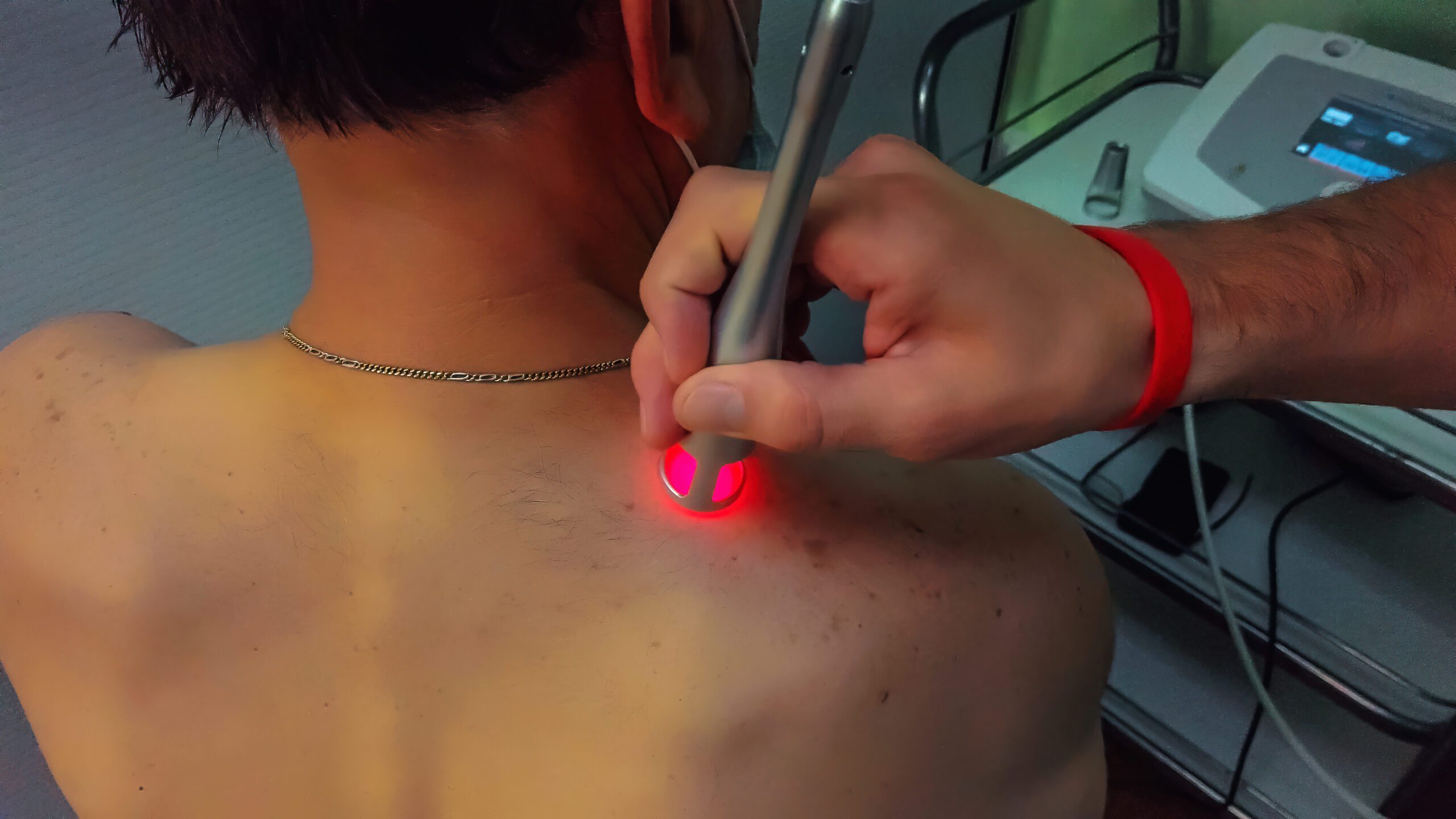

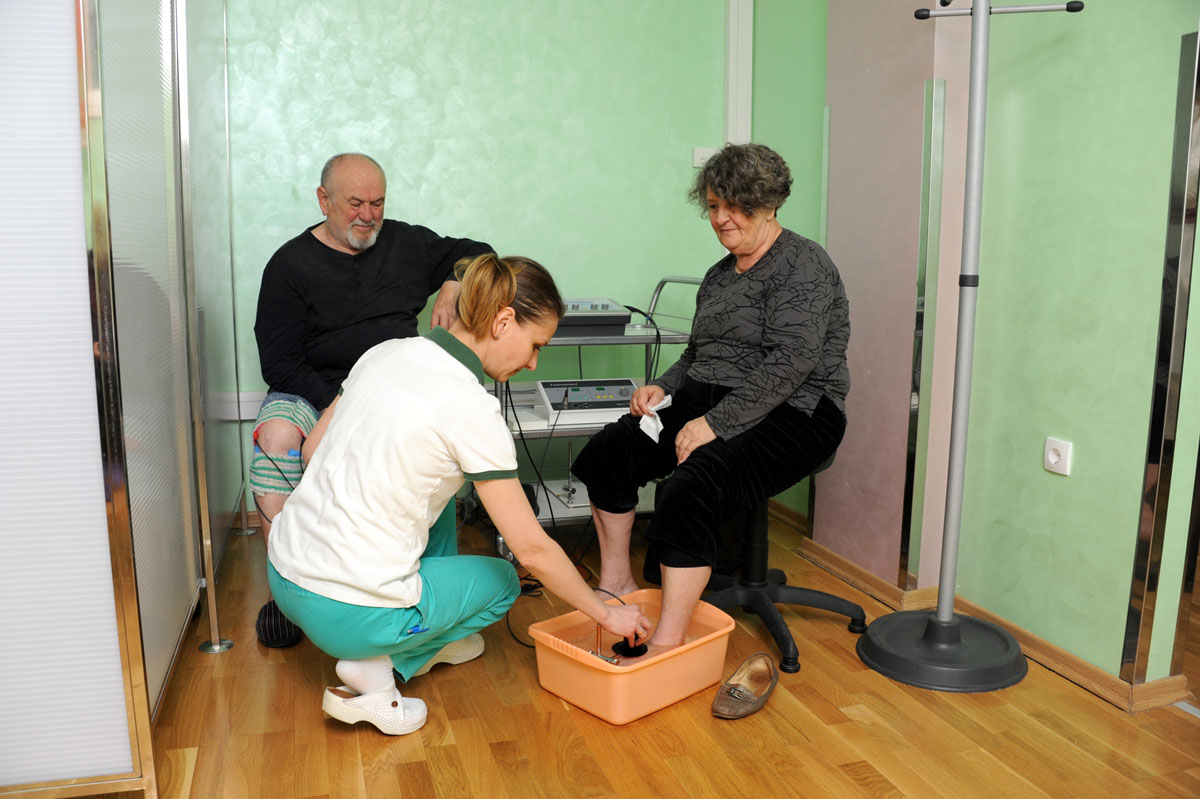
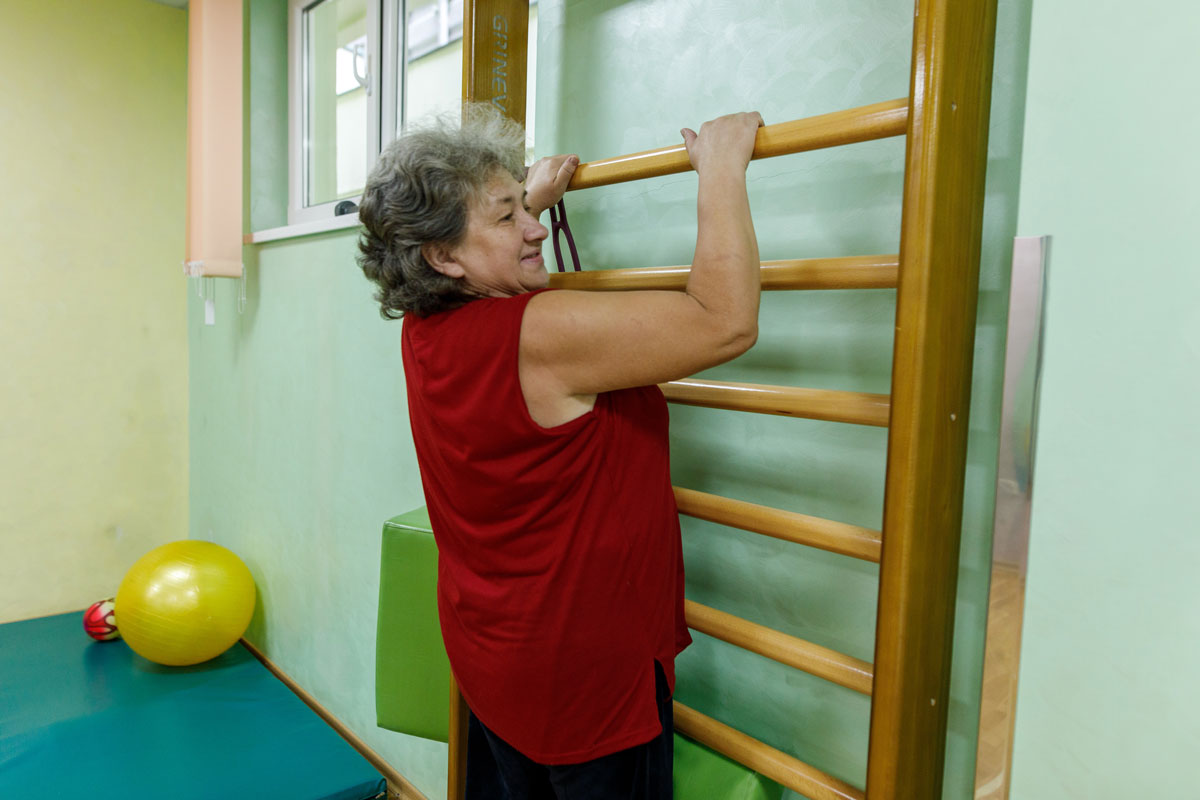
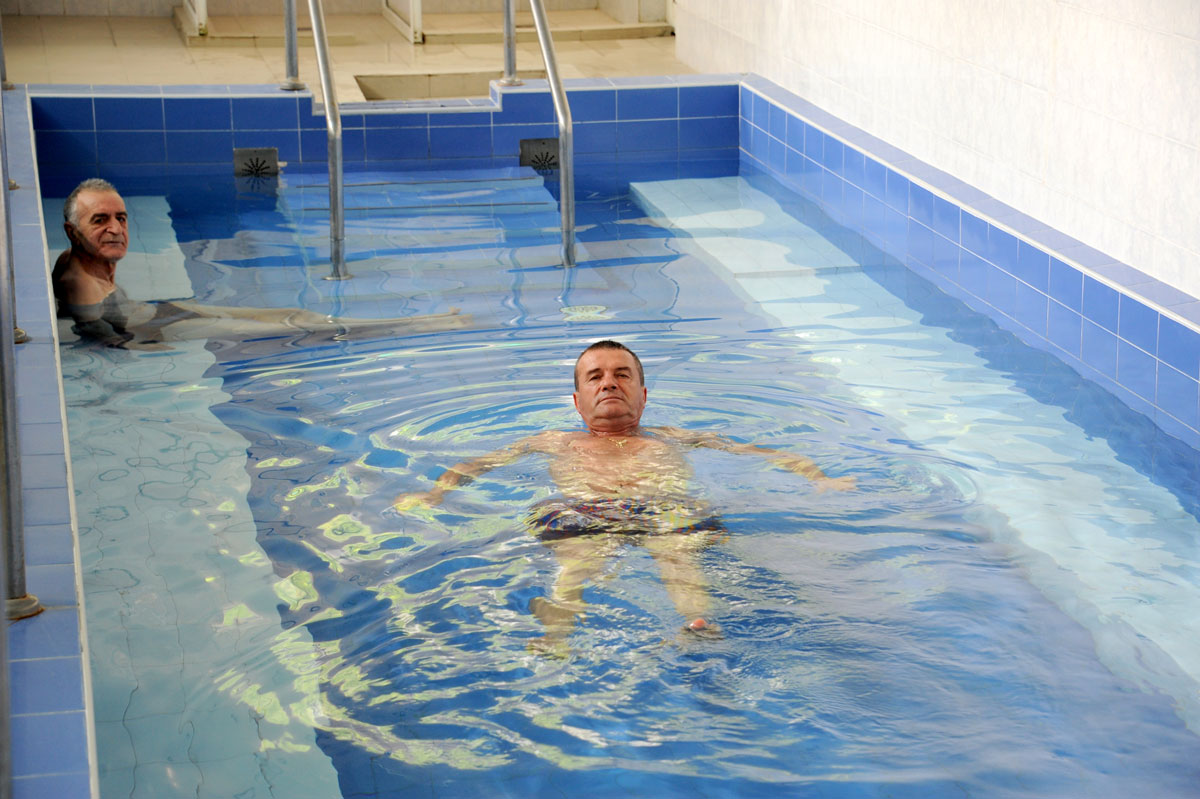
1. Acute psychosis, current associated behavior or acute suicidal tendencies
2. Acute treatment of addiction
3. Acute infectious disease followed by a febrile condition
4. Active and evolving forms of pulmonary and extra pulmonary tuberculosis
5. Decompensation of vital organs
6. Diabetic ketoacidosis and hyperosmolar state
7. Malignant diseases in the phase of active oncological treatment or an advanced stage of the disease that is not under control
8. Immunosuppressive therapy after transplantation of cells, tissues or organs, i.e. in the first 12 months after transplantation of hematopoietic cells
9. Stage of dementia that prevents cooperation with the insured person/Minimum mental score below 19/
10. Active phase of rheumatic diseases
11. Unstable angina pectoris
12. Refractory heart failure / NYHA IV /
13. Malignant hypertension
14. Phlebothrombosis of the deep veins of the legs
15. Lung embolism
16. Immobilization that prevents rehabilitation
Osteoarthritis – a very painful disease of the jointed cartilage, can have various causes. Besides the basic factors, such as congenital predisposition and obesity, often causes can be found in overloading of joints as well as various traumas and sports injuries. In the Western world almost 10% of the population suffers from this disease, and at almost 80% of people older than 55 years X- rays show a cartilage damage. Typical symptoms include joint pain and restriction of movement in joints. Molecular orthopedics has studied in detail the biological processes within the affected joint and realised that one of the biggest ‘culprits’ exactly the protein Interleukin 1 (IL-1). In the joint suffering from osteoarthritis there is a significantly increased concentration of that protein, and it causes further damage of cartilage, and the joint gradually loses its function.
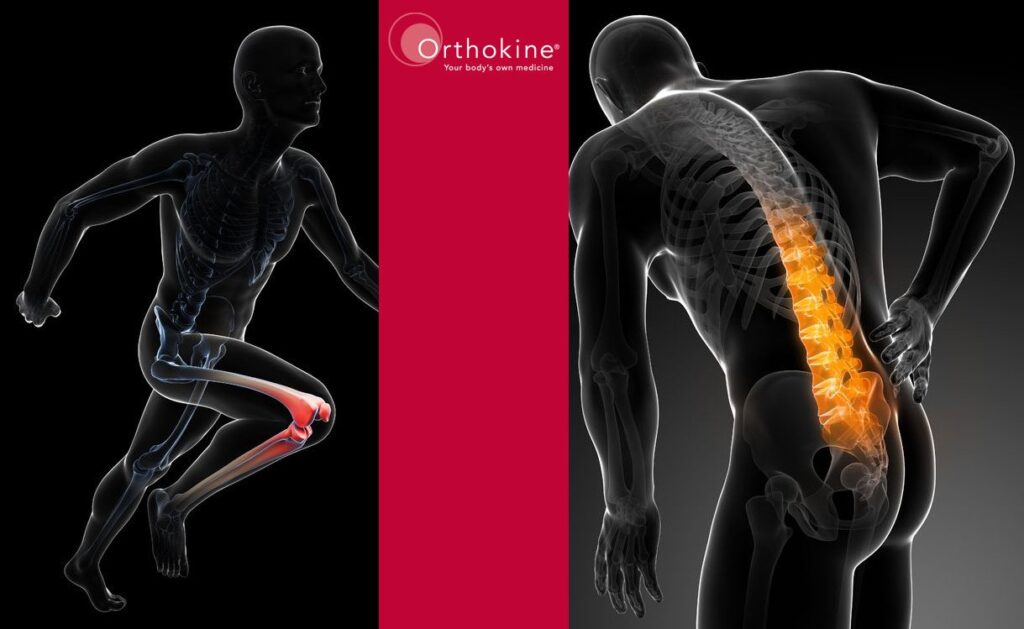
– Osteoarthritis of the knee, hip, shoulder, elbow and anklebone
– Traumatic injuries of the jointed cartilage
– Sciatica
– Traumatic muscular ruptures
– Pathological alterations of sinews and ligaments
– Other inflammatory and post-traumatic conditions
Orthokine – a protective protein of Your blood
– Blood is taken from a vein directly into the special EOT monovette (a special test tube). Specially treated glass beads which are within monovette ‘glue’ blood cells on themselves and stimulate the synthesis of protective proteins of the body.
– Monovette are stored in an incubator at 37 °C, which represents the optimal conditions for high quality synthesis of a protective protein.
– By centrifugaging, the blood cells are separated from the serum enriched with a high concentration of protective proteins and they are kept for further use.
– Finally we receive 5-6 injections of serum, which are, depending on the indication, injected into the diseased joint or some other part of the body 1-2 times a week.
Orthokine therapeutic system – helps in a cartilage protection
Biological antagonist of an inflammation factor Interleukin 1 (IL-1) is ideal for the natural and non-aggressive treatment of osteoarthritis. That natural protein is antagonist of Interleukin 1 receptor (IL-1ra). It disables an aggressive action of IL-1 and works by reducing inflammation and swelling in the affected joint, reduces pain, and has a protective effect on the tissue of a jointed cartilage. Curing by Orthokine has all the advantages of mentioned therapeutic effects. The protective protein IL-1ra, is a natural component of Your blood. Its amount, along with other protective proteins, increases in the process of application of the conditioned blood serum, which forms the basis of the medical product Orthokine, which is applied in the affected joint in the form of injections. Orthokine therapy has been successfully applied since 1997. Numerous studies have confirmed the effect of conditioned blood serum Orthokine in reducing joint pain and increasing joint mobility. The continuing process of deterioration of cartilage in joints affected by osteoarthritis is slowing down.
Orthokine autologous conditioned serum in the treatment of back pain
Back pain is a very common reason for visiting a doctor. The most common cause is the disturbances in the position of slipped disk which is located between the vertebrae. Moving of the slipped disk leads to pressure on the nerve tissue resulting in inflammation and back pain. Therapy with Orthokine is used successfully in solving the above mentioned problems by reducing inflammation and degeneration of a nerve tissue of the spinal cord damaged by inflammation. A therapeutic method with Orthokine is entirely natural, it is obtained from the patient’s own blood, and its effect has been clinically proven.
Orthokine therapy can be used for diseases of sinews and muscles, as well as at injuries
Signal proteins, such as IL-1, are substances that warn the cells in the body that there is an infection or a tissue injury. The body responds to the inflammation. If the inflammation does not pass in a few days, a chronic inflammation develops. That development is often seen in diseases such as osteoarthritis, cartilage injuries, sinew injuries, ligament injuries, muscle injuries and a chronic back pain. The task of protective biological antagonists IL-1, such as IL-1ra, is the prevention of inflammation.

Long-term clinical experience of eminent experts in this part of Europe have been implemented for the purpose of the treatment, with a special emphasis on the specific features of the sports trauma, recovery time which must be customised to meet the deadlines by sports associations as well as athletes’ contractual clauses. By the application of classical forms of physical therapies and regenerative methods, such as Orthokine therapy, recovery time is shortened to the maximum possible, with maximum repair of posttraumatic scar changes and possible disability of the injured body segment. The Clinic Atomska banja is the only specialised institution for rehabilitation in our country which uses both natural factors (mineral water) and the classical physical therapy and the latest achievements of regenerative medicine resulting in maximum effects of a rehabilitation treatment.